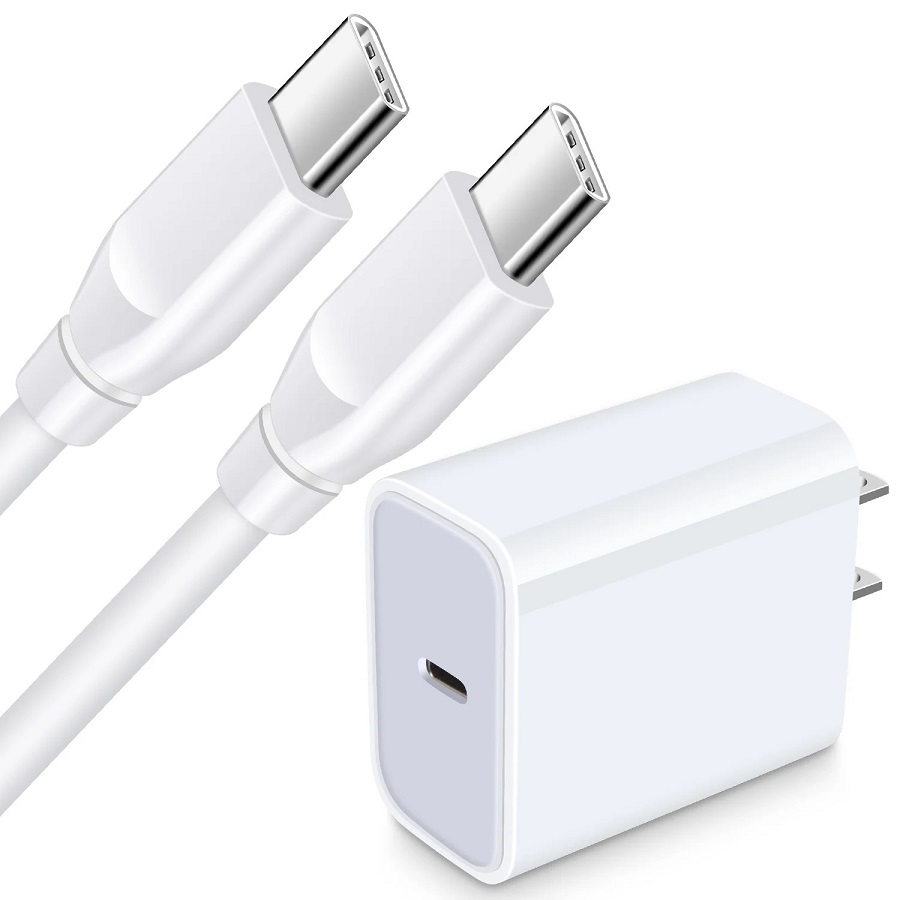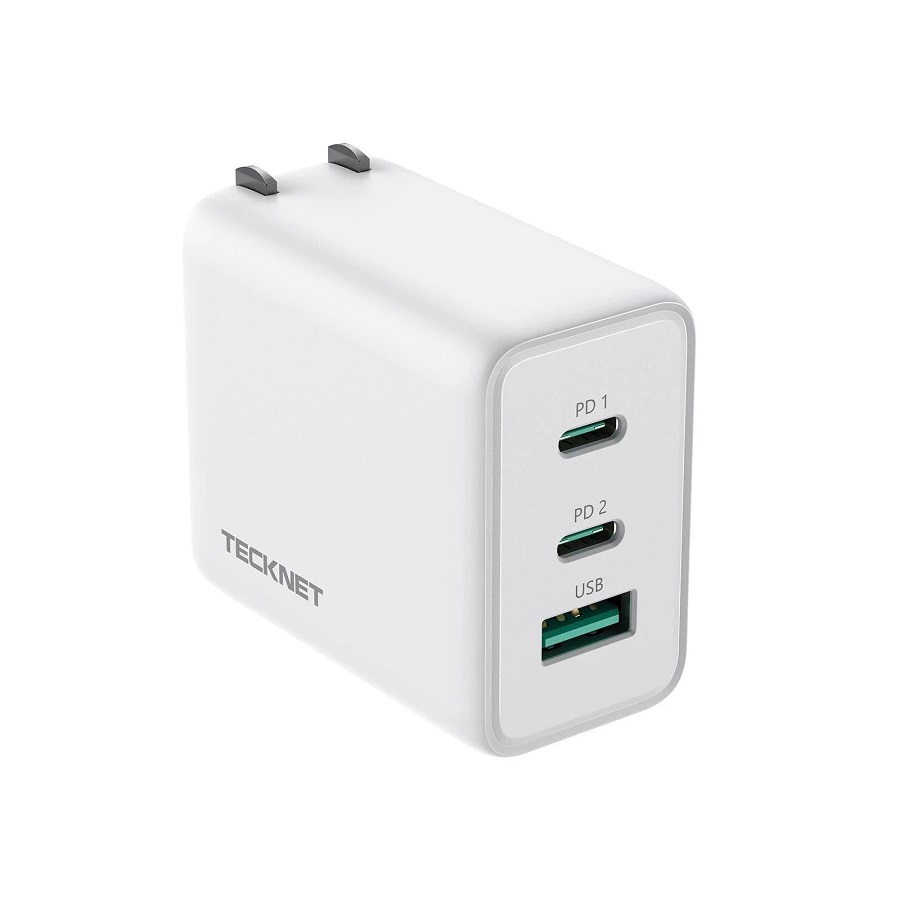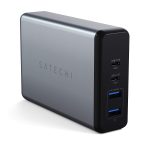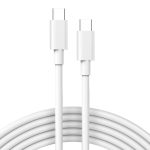Introduction to USB Type-C Chargers
USB Type-C chargers are the latest development in the world of power delivery. These devices mark a significant shift from previous USB standards, with a new, smaller connector shape. This universal connector works across multiple devices, which means one charger could fit your smartphone, tablet, or laptop. The reversible design simplifies the plugging process; no more fumbling to get the orientation right.
USB Type-C isn’t just about physical convenience; it offers faster data transfer and charging speeds compared to its predecessors. This improvement is a game-changer in our fast-paced digital life. Manufacturers across the globe are rapidly adopting USB Type-C for its efficiency and versatility.
The advancements in usb charger type c technology signal a move towards a more standardized and simplified charging ecosystem. Users now spend less time tangled in a web of assorted cables and more time enjoying their devices. The transition to Type-C is an essential step in technological evolution, reducing clutter and paving the way for advanced features that will further transform our digital experiences.

The Evolution of USB Chargers
The evolution of USB chargers reflects the rapid pace of technological innovation. USB chargers began with the USB 1.0 and 2.0 formats, which delivered limited power and data transfer rates. The emergence of USB 3.0 saw improvements in these areas, but it was with the introduction of USB Type-C that a significant leap was made.
USB Type-C, or usb charger type c, debuted as a progressive step, combining power delivery with high-speed data transfer in a compact connector. It supports the USB Power Delivery standard, which allows for higher voltages and currents, effectively speeding up charging times. This shift reflected the growing demand for faster, more efficient charging solutions in a world of increasing digital dependency.
The incorporation of alternate modes in USB Type-C also provided the ability to deliver other data protocols. This enhanced functionality through a single port and made usb charger type c a cornerstone for future developments in connectivity. Its introduction marked the dawn of a new era where one connector could service a myriad of devices without sacrificing performance.
As consumer electronics evolved, so too did the need for a more robust and flexible charging standard. USB Type-C answered this call, setting a new benchmark for what users could expect from their chargers. The ongoing evolution of USB technology ensures that usb charger type c is not the final chapter, but rather a key milestone in a journey towards more unified and powerful connectivity solutions.
Advantages of USB Type-C Over Previous Generations
USB Type-C chargers boast several advantages over their predecessors. One of the standout benefits is the reversible connector design. This feature ends the universal struggle with cable direction, ensuring that plugging in is always a hassle-free experience. Additionally, the enhanced power delivery of the usb charger type c allows for faster charging of devices, which is a significant upgrade. With the capability to carry more power, Type-C chargers can refuel batteries more quickly, reducing downtime.
Another significant advantage is the increased data transfer speed. USB Type-C supports USB 3.1, offering speeds up to 10 Gbps, which is twice as fast as USB 3.0. The streamlined connectivity also stands out, with the usb charger type c being compatible with a wide range of devices, from smartphones to laptops. This universality means that carrying multiple chargers for different devices becomes unnecessary.
Furthermore, USB Type-C has the ability to conduct alternate modes, which include other data protocols like DisplayPort and Thunderbolt 3. These modes enhance functionality, allowing for additional uses beyond charging and data transfer. Finally, the future-proof design of the usb charger type c prepares consumers and manufacturers for upcoming innovations in the tech industry.
The shift towards USB Type-C reflects the technology’s capability to meet the present demand for efficiency and versatility. Its adoption simplifies our digital lives and marks a significant improvement over earlier USB generations.
USB Type-C Chargers and Fast Charging Technology
Fast charging technology is a critical feature of usb charger type c. This technology allows devices to charge much quicker than with older USB chargers. Let’s explore how Type-C chargers stand out in this area:
- Higher Power Delivery: Unlike previous generations, usb charger type c supports enhanced power delivery. This means they can handle higher currents and deliver more power, cutting down charging time.
- Smart Power Management: Type-C chargers often come with intelligent power management systems. They communicate with the device’s hardware to deliver the exact amount of power needed for the fastest charge.
- Broad Device Support: Many new smartphones, tablets, and laptops are being designed with fast charging in mind. Usb charger type c is widely compatible with these devices, making it a versatile tool for powering up quickly.
- USB PD Standard: USB Power Delivery (PD) is a charging standard available with usb charger type c. It allows devices to charge at higher voltages, which can significantly speed up the charging process.
- Multipurpose Use: While they’re rapidly charging devices, usb charger type c cables can simultaneously transmit data. Users don’t have to choose between charging and transferring files.
Enhanced by fast charging technology, usb charger type c is transforming power delivery for a new age of electronics. Users enjoy less waiting, more doing.

Compatibility and Versatility of USB Type-C
One of the hallmarks of USB Type-C is its wide compatibility and versatility. With usb charger type c, you no longer need different cables for all your devices. This universal solution fits many modern electronics, from phones and tablets to laptops and gaming devices.
Universal Fit for a Range of Devices
USB Type-C’s uniform design means it’s the one cable to link a multitude of gadgets. This reduces clutter and simplifies connection setups. Users enjoy a simplified experience, needing only a single cable for both power and data.
Enhanced Versatility
The versatility extends beyond just charging. Type-C ports carry data, video, and audio through various protocols. With usb charger type c, you can connect to monitors and other peripherals with ease.
One Charger for All Tasks
Whether charging or transferring data, usb charger type c handles it all. This multi-functionality means less time swapping cables, and more time being productive or enjoying your devices.
These features of usb charger type c demonstrate a strong move towards a more efficient, unified approach to electronic device design and usability. The compatibility and versatility of USB Type-C are significant factors in its widespread adoption.
Impact on Consumer Electronics
The impact of usb charger type c on consumer electronics is vast and significant. First and foremost, it brings a universal charging solution. This change means fewer cables and more convenience for users. No more searching for the right charger specific to a device.
With usb charger type c, device charging ports are standardized. This shift leads to fewer compatibility issues when connecting different electronics. It’s easier than ever to charge your phone, tablet, or laptop with the same cable.
Manufacturers now focus on Type-C for new products. This consistency helps consumers know what to expect with new electronics. The days of multiple cables for different devices are ending.
Type-C’s fast charging capability improves users’ lifestyles. Imagine charging your device in half the time it used to take. Less waiting means more time using your tech.
Safety standards have improved with usb charger type c. With smarter power management, devices charge effectively and safely. This reduces the risk of overheating and extends the life of electronics.
Lastly, the slim, reversible design of Type-C connectors fits modern, sleek devices. It supports the trend towards thinner, more portable electronics without scarifying the port’s functionality.
Overall, usb charger type c reshapes the landscape of consumer electronics by simplifying and enhancing the way we charge and connect our devices.

Environmental Benefits of USB Type-C Adoption
USB Type-C chargers offer significant environmental benefits. The universal design reduces electronic waste. Because one usb charger type c fits many devices, users need fewer cables. This means fewer cables are produced and discarded. Fewer e-waste accumulates in landfills, which is better for the planet.
Another benefit is the durability of usb charger type c cables. They last longer than older cables. This reduces the frequency of replacement. Less manufacturing means less resource use and pollution.
The improved power efficiency of usb charger type c also plays a role. Devices charge faster and require less energy. This can lead to a decrease in energy consumption overall.
Moreover, the push towards a single standard encourages recycling. Old and incompatible chargers are less of an issue when one type works with multiple devices.
In summary, the adoption of usb charger type c helps reduce waste, saves energy, and promotes recycling. These factors contribute to a healthier environment as the tech industry moves forward.
Future of USB Type-C in the Tech Industry
USB Type-C, or usb charger type c, is shaping the future of tech. The industry is adopting this standard at a swift pace. This trend points towards a future where one connector fits all, bringing countless benefits. The impact of USB Type-C will continue to grow, from personal computing to large-scale data centers.
Continued Innovation and Adoption
In the coming years, we’ll likely see USB Type-C evolve further. Expect more devices to adopt this technology. Its convenience and efficiency will drive this trend. Tech giants are already leading the charge, opting for Type-C in their latest models.
Enhanced Data Transfer and Power Delivery
Tech is advancing, and usb charger type c will evolve too. We can anticipate even faster data speeds and more powerful charging solutions. This progress will meet the demands of new, power-hungry devices.
Streamlining of Ports and Cables
Future gadgets may sport fewer port types, thanks to Type-C’s versatility. This change could streamline product design and user experience. Less clutter, more function—that’s the promise of usb charger type c.
Impact on Wearable and IoT Devices
As smaller tech gadgets gain popularity, Type-C’s compact size becomes key. Wearable and IoT devices might soon charge and connect with usb charger type c. This shift would unify charging across an even broader range of tech.
Potential for Standardization Across Industries
The use of usb charger type c may extend beyond consumer electronics. Industries may standardize around Type-C for its reliability and efficiency. This uniformity would be a major step in tech interoperability.
The future for usb charger type c in the tech industry is bright and full of potential. It stands as a testament to innovation, versatility, and a user-centric design philosophy.


